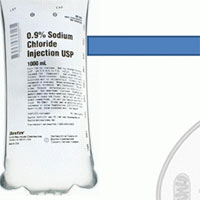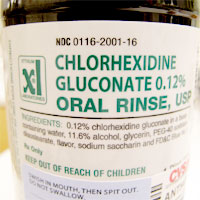Tag: ICU

Nine Reasons to Quit Using Normal Saline for Resuscitation
Saline vs. balanced solutions has been a topic of ongoing debate. Two fresh studies will illuminate this: the SMART and SALT-ED trials. This post summarizes current knowledge, beginning with physiology and working our way... read more

The Practice of Respect in the ICU
Although "respect" and "dignity" are intuitive concepts, little formal work has addressed their systematic application in the ICU setting. After convening a multidisciplinary group of relevant experts, we undertook a review... read more

Current efforts to fight sepsis aren’t working. We need a bolder approach
Thanks to antibiotics, vaccinations, and public health advances like modern sanitation, it's easy to think that Americans live largely free of the infectious diseases that once took such a toll. That’s partially right:... read more

The Fluid Debate: Balanced or Unbalanced
Consider using balanced fluids in your ED unless you are treating a patient at risk for cerebral edema, or a patient with a chloride responsive metabolic alkalosis, e.g. from gastric losses. Although the superiority of balanced... read more

Effects of Chlorhexidine Gluconate Oral Care on Hospital Mortality
Chlorhexidine oral care is widely used in critically and non-critically ill hospitalized patients to maintain oral health. We investigated the effect of chlorhexidine oral care on mortality in a general hospitalized population.... read more

The Relationship Between ICU Hypotension and In-hospital Mortality and Morbidity in Septic Patients
Current guidelines recommend maintaining a mean arterial pressure (MAP)≥ 65 mmHg in septic patients. However, the relationship between hypotension and major complications in septic patients remains unclear. We, therefore,... read more

Evaluating the Cost-Effectiveness of Proportional-Assist Ventilation Plus vs. Pressure Support Ventilation in the ICU in Two Countries
The published reductions in asynchrony and length of stay in the ICU with proportional assist ventilation (PAV ventilation by Medtronic) led to shorter time on ventilation, and reduced incidence of ventilator-associated pneumonia... read more

The Contemporary Timing of Trauma Deaths
In this study, the distribution of trauma deaths no longer appears to be trimodal. This may reflect advances in trauma and ICU care, and the widespread adaption of damage control principles. Early deaths, however, remains... read more

The Role of Speech and Language Therapy in Critical Care
The role of speech and language therapists (SLTs) in critical care can be unclear so this article sets out the scope of practice to increase awareness of the value of SLTs as part of the wider multidisciplinary team. Speech... read more

Measuring and Monitoring Lean Body Mass in Critical Illness
Methods to monitor lean body mass in the ICU are under constant development, improving upon bedside usability and offering new modalities to measure. This provides clinicians with valuable markers with which to identify patients... read more

Strategies for Intravenous Fluid Resuscitation in Trauma Patients
Fluids are drugs and should be managed as such. Appropriate early fluid resuscitation in trauma patients is a challenging task. Care should be taken in selecting both the type and volume to promote appropriate perfusion and... read more

Reducing diagnostic errors in the ICU
Diagnostic error occurs in 5-20 percent of physician-patient encounters, with a comparable prevalence among ICU admissions and patients who die in the intensive care unit (ICU). Further, diagnostic errors comprise 9-12 percent... read more

Abnormal Saline and the History of Intravenous Fluids
Two new clinical trials together involving nearly 30,000 patients support previous observational evidence that the most common solution used for intravenous fluid therapy in the world is associated with kidney damage. Both... read more

Early Interventions for the Prevention of Posttraumatic Stress Symptoms in Survivors of Critical Illness
Despite a paucity of high-quality clinical investigations, the preponderance of evidence to date suggests that 1) posttraumatic stress disorder among survivors of critical illness may be preventable and 2) early interventions... read more




